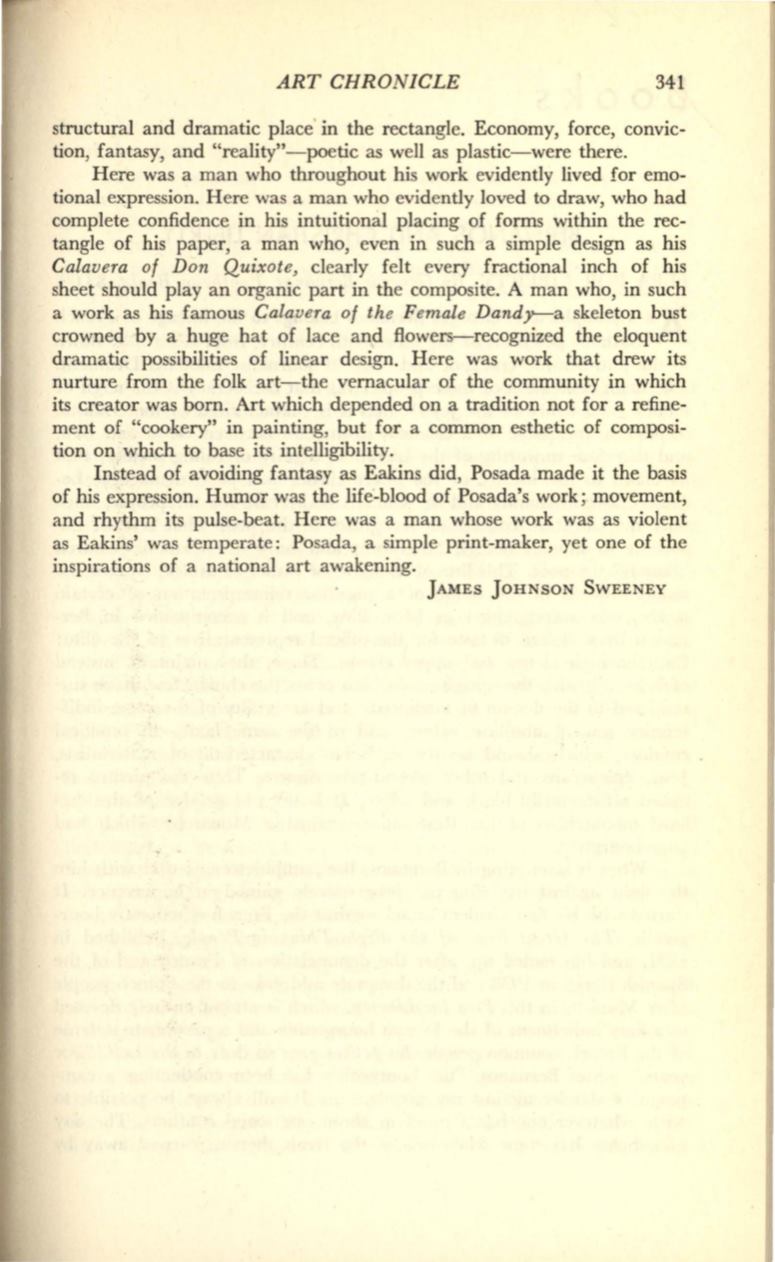
ART CHRONICLE
341
structural and dramatic place in the rectangle. Economy, force, convic–
tion, fantasy, and "reality"-poetic as well as plastic-were there.
Here was a man who throughout his work evidently lived for emo–
tional expression. H ere was a man who evidently loved to draw, who had
complete confidence in his intuitional placing of forms within the rec–
tangle of his paper, a man who, even in such a simple design as his
Calavera of Don Quixote,
clearly felt every fractional inch of his
sheet should play an organic part in the composite. A man who, in such
a work as his famous
Calavera of the Female Dandy--a
skeleton bust
crowned by a huge hat of lace and flowers-recognized the eloquent
dramatic possibilities of linear design. Here was work that drew its
nurture from the folk art-the vernacular of the community in which
its creator was born. Art which depended on a tradition not for a refine–
ment of "cookery" in painting, but for a common esthetic of composi–
tion on which to base its intelligibility.
Instead of avoiding fantasy as Eakins did, Posada made it the basis
of his expression. Humor was the life-blood of Posada's work; movement,
and rhythm its pulse-beat. H ere was a man whose work was as violent
as Eakins' was temperate: Posada, a simple print-maker, yet one of the
inspirations of a national art awakening.
JAMEs JoHNSON SwEENEY


